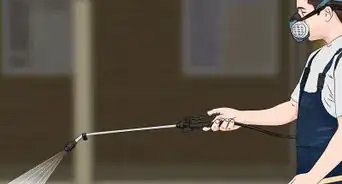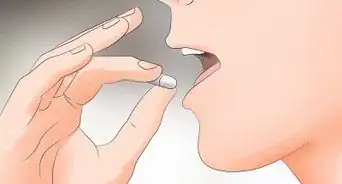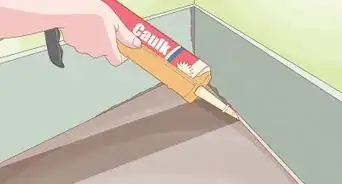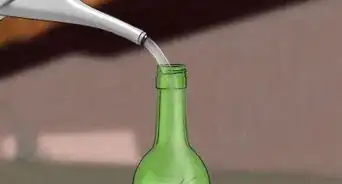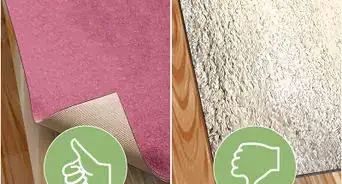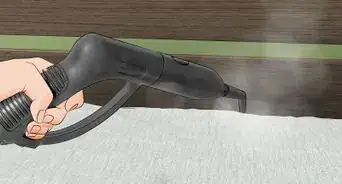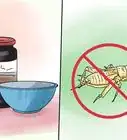This article was co-authored by Rachel Cho. Rachel Cho is a Floral Designer, Plant Specialist, and the Owner of Rachel Cho Floral Design, a floral shop based in New York City. With more than 16 years of experience, she specializes in original and impactful floral design and is known for her dexterity, innate artistry, and design sense. Rachel’s work has been featured in numerous national media outlets such as The New York Times, Harper’s Bazaar, and Huffington Post Weddings.
There are 8 references cited in this article, which can be found at the bottom of the page.
wikiHow marks an article as reader-approved once it receives enough positive feedback. This article has 16 testimonials from our readers, earning it our reader-approved status.
This article has been viewed 270,402 times.
Japanese beetles are the most widespread turf-grass pest in the US, mostly found in the Eastern and Midwest regions. They are a detriment to anyone's garden, as the adult beetles can consume the leaves and flowers of numerous types of plants. The larvae, which are called white grubs, feast on the plants' roots and can create dead patches on the grass. The adult beetles are a metallic green, and once they emerge from the ground in late spring or early summer, immediately begin feeding on your plants.[1] Knowing how to kill Japanese beetles effectively and efficiently can prevent your prized plants from becoming beetle food.
Steps
Removing Japanese Beetles by Biological or Chemical Means
-
1Use nematodes to kill larvae. Nematodes are parasitic insect-eating round worms that feed on the grubs in the ground, providing an organic pest control method. Common nematode types include Steinernema Feltiae and Heterorhabditis bacteriophora.[2] Place nematodes in the soil in late August or early September to begin treating the grubs for the next year. But you can apply nematodes as soon as there is evidence of Japanese beetle activity in your yard.[3]
- Make sure the nematodes are fresh because they are living organisms. Water the ground before you spread them out, and keep the soil moist after you apply. You can also apply nematodes in mulch. For 50 or 100 million nematodes mix, use 1/2 teaspoon per gallon of water.
- Beneficial nematodes only attack soil dwelling pests, such as Japanese beetles, fleas, German cockroaches, termites, and ants. They are not harmful to people, animals, plants, or earthworms.[4]
- You can purchase nematodes online, at garden centers, or at most major home improvement retailers.
- This method is effective for killing the pest in its larvae stage.
-
2Chemically remove grubs with insecticides. You can spray the plants with Japanese beetle killer, found in most retailers and online. Sevin dust can also work, but it might kill beneficial insects along with the Japanese beetles.
- Some ingredients to look for when purchasing an insecticide are carbaryl, acephate, and permethrin.[5] A Pyrethrin-based insecticide is a safe way to control pests on your plants while getting rid of other beetles in the process.[6]
- Some insecticides are aimed at high Japanese beetle activity in your yard. Others are designed to be used in the early fall once the eggs have hatched and grubs are present. Make sure you read the label on the insecticide before you purchase it to find out what specific problem it targets.
Advertisement -
3Use organic neem-based insecticides. Neem oil is a natural pesticide that comes from the seeds of the neem tree, and is considered an anti-feedant because it reduces feeding of Japanese beetles when applied to the plants. Spray plants with neem oil to control the pests.
- Azadirachtin, one of the components of neem oil, can also repel and reduce the feeding of nematodes.[7] Use caution using neem oil if you have nematodes in your ground to combat grubs.
- You can purchase neem oil insecticides online and at most major retailers with a garden center.
-
4Spray Japanese beetles with insecticidal soap. Soap-detergent sprays are contact pesticides, with no residual effects. They are similar to household detergents, but are specifically designed not to harm plants like household soaps can.
- When applying insecticidal soaps, you must thoroughly wet the pest. Most pests needs to be sprayed every 4-7 days.
- The ingredient you are looking for in a spray is potassium bicarbonate.[8]
- Even soaps manufactured specifically for insects can harm certain plants. Check the label of the bottle, or do a test on your plant before spraying wide areas or repeatedly.
Removing Japanese Beetles Through Other Means
-
1Pick Japanese beetle adults from your plants. Japanese beetles can be easily removed from plants with your hands. After you remove the pest from the plant, drop it into a bucket of soapy water.
- Don't squish the beetle to kill it. Beetles attract more beetles through pheromones, which are so powerful they can attract beetles from a few thousand feet.[9] If you squish a Japanese beetle, you run the risk of releasing the female beetle sex pheromone.
- This should be done early in the morning. Lay out a drop cloth and shake your plants, then dump the beetles on the cloth into soapy water.
-
2Choose your plants carefully. Japanese beetles are attracted to certain plant species, so when you plan your garden, avoid plants that they will migrate towards. Carefully consult a list of susceptible plants, like this one from the Farmer's Almanac.
-
3Cover your plants with a floating row cover. These covers allow sunlight, air, and water in, but keep beetles out. Make sure to keep the edges of the covers flush with the ground so no beetles can get through. If you already have a grub problem, avoid this method because it could potentially trap beetles inside with your plants.
- You can buy floating row covers online or at garden centers.
-
4Keep your plants healthy. Japanese beetles are attracted to overripe and rotting plants.[10] To avoid luring in beetles, harvest your plants regularly and try to keep them healthy.
-
5Avoid Japanese beetle traps. These traps use pheromones and scented lures to attract beetles. Most research has found that traps attract more beetles to a yard than it actually traps.[11] This means you are unnecessarily attracting beetles to your yard, resulting in a larger problem. Only use this method if you have a large yard and can place the trap a significant distance away from your garden.
Community Q&A
-
QuestionWhat are some home remedies I can use to kill Japanese beetles?
 Community AnswerJapanese beetles don't like neem oil. You can buy neem oil from a health food store or online from vendors like Amazon.
Community AnswerJapanese beetles don't like neem oil. You can buy neem oil from a health food store or online from vendors like Amazon. -
QuestionWe have 100's of Japanese beetles on our peach trees. They are on the peaches also. What is the most effective way to get rid of these beetles?
 Community AnswerI believe you need to use a variety of measures. I have found spraying trees with Neem Oil and using physical picking of the beetles off of the trees work the best. The Neem can be used up until the day of harvest.
Community AnswerI believe you need to use a variety of measures. I have found spraying trees with Neem Oil and using physical picking of the beetles off of the trees work the best. The Neem can be used up until the day of harvest. -
QuestionIs Sevin dust harmful to honeybees?
 Community AnswerYes. Sevin, or any carbaryl insecticide, will kill bees. If this is a concern, avoid applying it to plants bees are likely to visit (those presently flowering).
Community AnswerYes. Sevin, or any carbaryl insecticide, will kill bees. If this is a concern, avoid applying it to plants bees are likely to visit (those presently flowering).
References
- ↑ http://www.almanac.com/content/japanese-beetles
- ↑ http://www.buglogical.com/beneficial-nematodes/
- ↑ https://www.aphis.usda.gov/plant_health/plant_pest_info/jb/downloads/JBhandbook.pdf
- ↑ https://www.aphis.usda.gov/plant_health/plant_pest_info/jb/downloads/JBhandbook.pdf
- ↑ http://www.bhg.com/gardening/pests/insects-diseases-weeds/stop-japanese-beetles/
- ↑ http://www.gardeners.com/how-to/control-japanese-beetles/5163.html
- ↑ http://npic.orst.edu/factsheets/neemgen.html
- ↑ http://www.almanac.com/content/japanese-beetles
- ↑ http://www.extension.umn.edu/garden/insects/find/japanese-beetles/
About This Article
To kill Japanese beetles, spray your plants with an insecticide that contains carbaryl, acephate, and permethrin. If you want to avoid using chemicals, you can spray your plants with organic neem oil instead. Insecticidal soap sprays are also effective at killing the beetles, but you'll need to spray the bugs directly with the insecticidal soap and repeat the application every 4-7 days. For tips on removing the beetles instead of killing them, read on!












